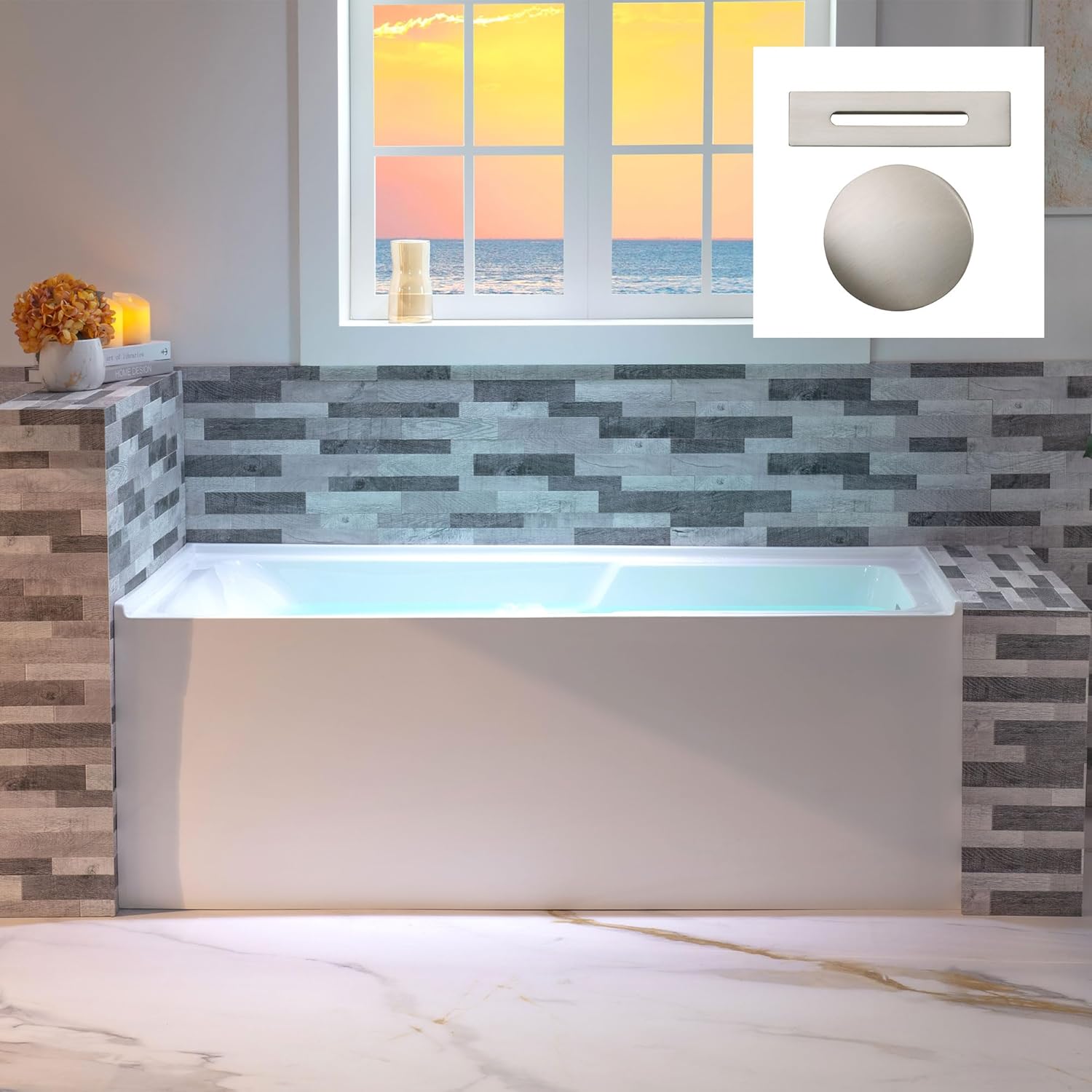By using our website, you agree to the use of cookies as described in our Cookie Policy
The Boss’s Daughter
Bath Tub Basics: Finding the Perfect Tub for Your Home
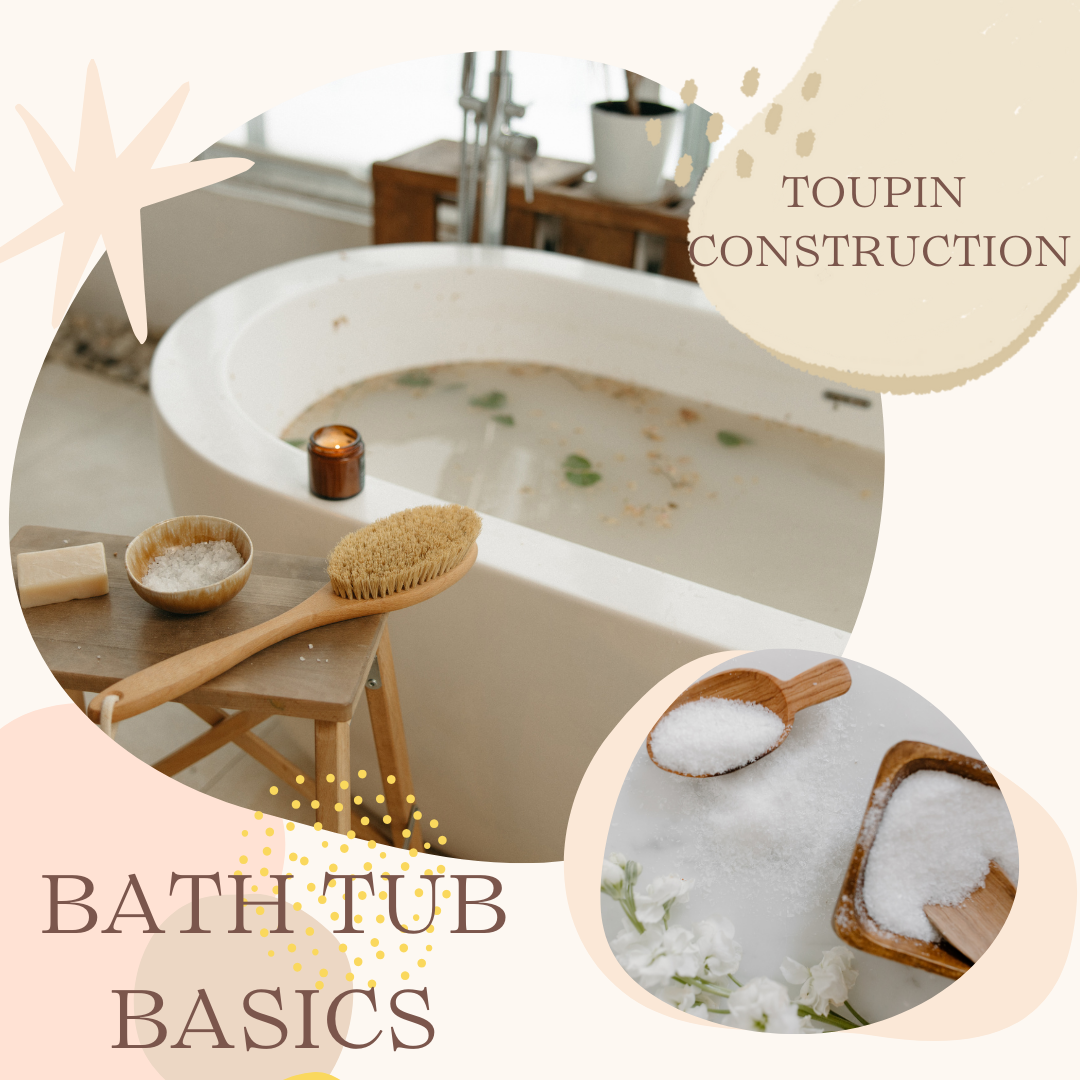
Bath Tub Basics: Finding the Perfect Tub for Your Home
Let me be honest with you—there was a time when I couldn’t stand baths. The thought of just sitting there, soaking in what I convinced myself was my own filth? Gross. It felt like something straight out of a witch’s cauldron, and I was not about that life. Showers were my go-to—quick, efficient, and drama-free.
But then, life threw me a few curveballs. My youngest was diagnosed with ASD, and suddenly, my world became a whirlwind of appointments, meltdowns, and just constant noise. I love my family dearly, but let’s be real: I couldn’t find 30 minutes of peace without a kid clinging to me, the dog barking, or my husband needing something. I was exhausted and overwhelmed, and I desperately needed an escape.
That’s when I turned to baths.
At first, it was awkward—me and my cauldron paranoia—but over time, the bath became my sanctuary. I realized it wasn’t just about getting clean; it was about reclaiming a little slice of quiet, uninterrupted me time. Now? I’ve completely transformed my bath experience. I installed a TV (yes, really!), I splurge on fancy soaps and bath bombs, and it’s become the highlight of my day.
If you’re feeling stressed, burnt out, or just in need of a little slice of heaven, finding the right bath tub can make all the difference. Whether you’re upgrading your space or just dreaming of a better soak, this guide will help you find your perfect match—and maybe even discover your own escape along the way.
1. Types of Bathtubs
Before you fall in love with a tub, you need to know the options. Each type of tub has its own vibe and functionality.
Clawfoot Tubs:
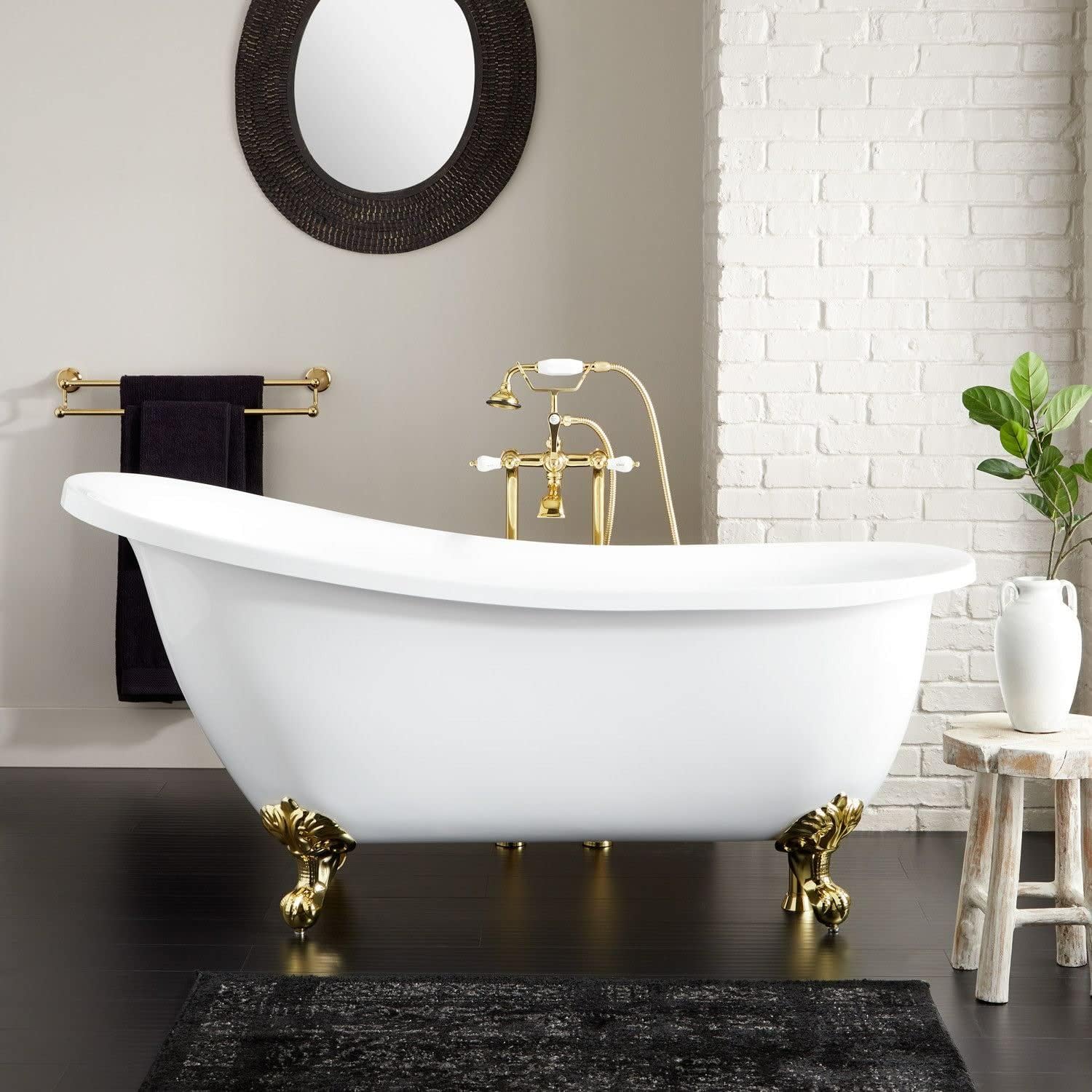 https://amzn.to/3UWZB3J
https://amzn.to/3UWZB3J
This beautiful freestanding tub has a Victorian inspired shape and imperial claw feet make it a welcome addition to any home
These vintage-style beauties bring timeless elegance. Perfect for soaking, they’re ideal for larger bathrooms where you can show off their sculptural charm.
Pros: Spacious, luxurious, and statement-making.
Cons: Heavier (requires floor support) and pricier.
Freestanding Tubs:
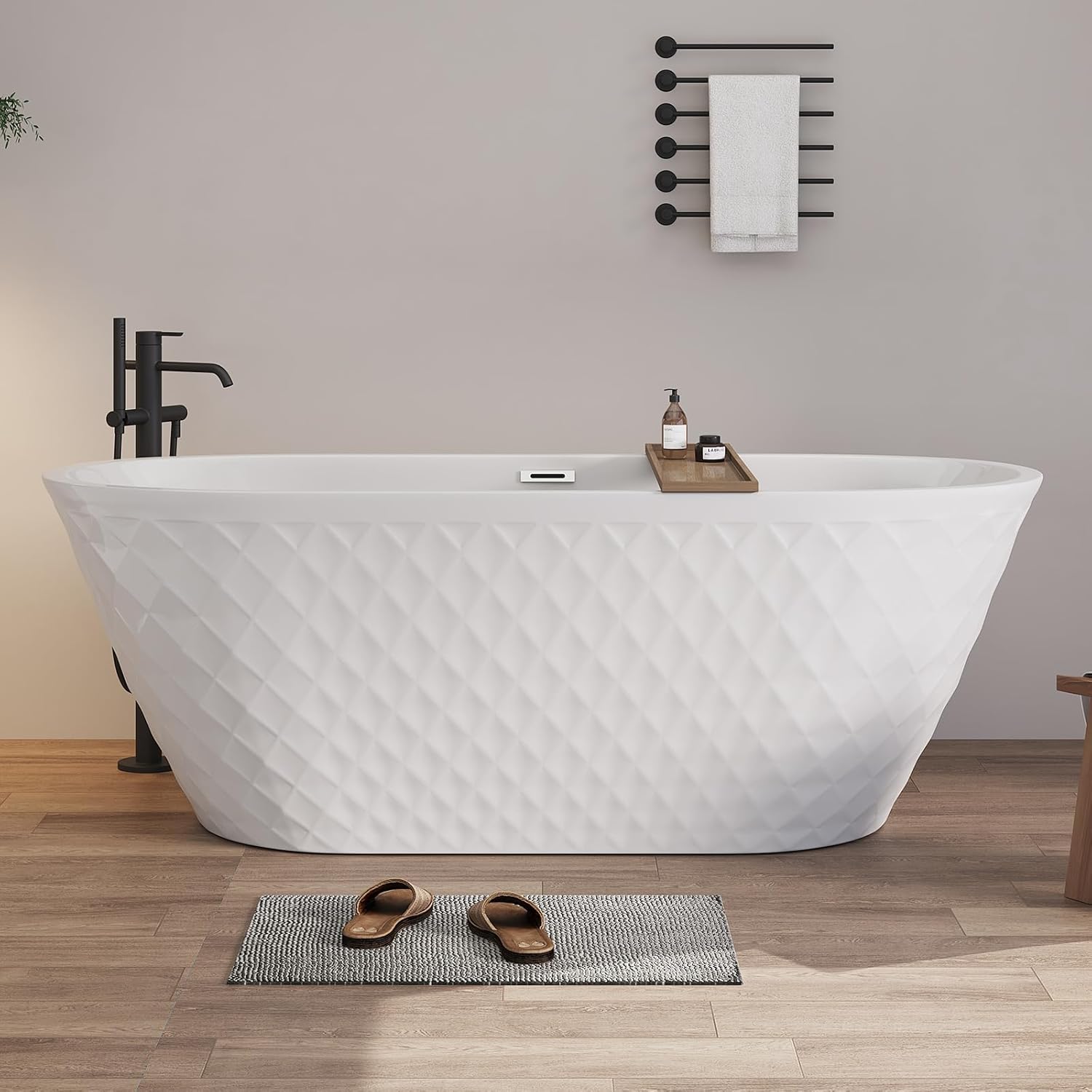 https://amzn.to/4fS1bvL
https://amzn.to/4fS1bvL
This freestanding bathtub masterfully blends artistic expression with modern craftsmanship. The ripple exterior design, inspired by natural water elements, brings a sense of rhythm and flow to the bathtub.
Sleek and modern, these tubs can be placed anywhere in your bathroom, making them incredibly versatile.
Pros: Stylish and easy to install.
Cons: Needs space to shine and may lack built-in storage.
Alcove Tubs:
Practical and compact, these tubs fit snugly between three walls, making them perfect for small spaces.
Pros: Affordable and space-saving.
Cons: Limited design options and less dramatic.
Corner Tubs:
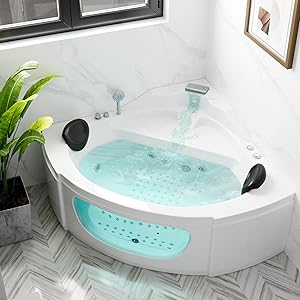 https://amzn.to/3ZaRuTL
https://amzn.to/3ZaRuTL
Honestly the little window would have we swimming in the bath pretending to be an otter- don't act like you wouldn't.
Designed for two, these tubs are perfect for master bathrooms where luxury meets functionality.
Pros: Great for couples and adds a spa-like feel.
Cons: Takes up more space and uses more water.
Whirlpool/Jetted Tubs:
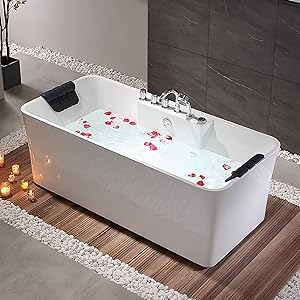 https://amzn.to/4fR5szx
https://amzn.to/4fR5szx
Timeless and classic bathtub for your relaxation needs
The ultimate in relaxation, these tubs offer water jets for a therapeutic soak.
Pros: Excellent for muscle relaxation and luxury living.
Cons: Higher maintenance and energy costs.
2. Choosing the Right Material
Bath tub materials aren’t just about looks—they affect comfort, durability, and maintenance.
Acrylic: Lightweight, affordable, and available in many styles. However, it can scratch easily.
Porcelain-Enamel Steel: Durable and easy to clean, but can feel cold to the touch.
Cast Iron: Unbeatable in durability and heat retention, but very heavy (make sure your floor can support it!).
Fiberglass: Budget-friendly but less durable over time.
Stone or Resin High-end, stunning, and heat-retentive—perfect for a luxury bathroom.
3. Sizing Your Tub
A tub that’s too big or too small can ruin your bathroom experience. Consider these factors:
Bathroom Size: Measure your space carefully, including doorways and hallways for delivery.
Tub Depth: For deep soaking, aim for a depth of at least 14-16 inches.
Capacity: Standard tubs hold around 42-80 gallons of water. Larger tubs will need extra water-heating power!
4. Features to Consider
Want to elevate your tub game? Look for these features:
Built-In Shelves: Handy for storing bath products or decor.
Ergonomic Design: A sloped back or armrests can make all the difference.
Anti-Slip Surfaces: Essential for safety, especially if you have kids.
Drain Placement: Match it to your bathroom’s plumbing to avoid extra costs.
5. Cost Breakdown
Bath tub prices can vary widely based on type, material, and brand:
- Budget tubs (alcove or fiberglass): $200–$800
- Mid-range tubs (freestanding or acrylic): $1,000–$3,000
- Luxury tubs (clawfoot, cast iron, or stone): $4,000+
Factor in installation costs, which can range from $500 to $2,000 depending on complexity.
6. The Final Checklist
Before you commit, make sure you:
- Measure your space (twice!).
- Check your floor’s weight capacity.
- Consider plumbing adjustments.
- Align your choice with your budget and long-term needs.
Closing Thoughts: Your Perfect Soak Awaits
If there’s one thing I’ve learned, it’s that life can feel chaotic and overwhelming, but finding even the smallest escapes can make all the difference. For me, that’s my bath tub—a place where I can hit pause, breathe, and feel like myself again. It’s not just about the tub or the bubbles; it’s about carving out a space that’s yours, where the world can wait for just a little while.
I hope this guide helps you find your own perfect tub—whether you’re upgrading to something fancy or just starting to appreciate the one you already have. Trust me, with the right setup, it can become more than just a fixture—it can be your sanctuary. And if you ever need ideas, tips, or even someone to gush about bath bombs with, I’m your girl. Since this topic is just a staple in my life I thought I would make it a series, so keep an eye out for our Bath Bliss Series.
Now, go soak up some peace. You deserve it.
Guys I am not sure if I told you, but I am addicted to Amazon, I love not leaving my house and do most of my shopping online ( Thanks Covid) so I will include links and photos to some of my favorites in this and my upcoming posts!
‹ Back


